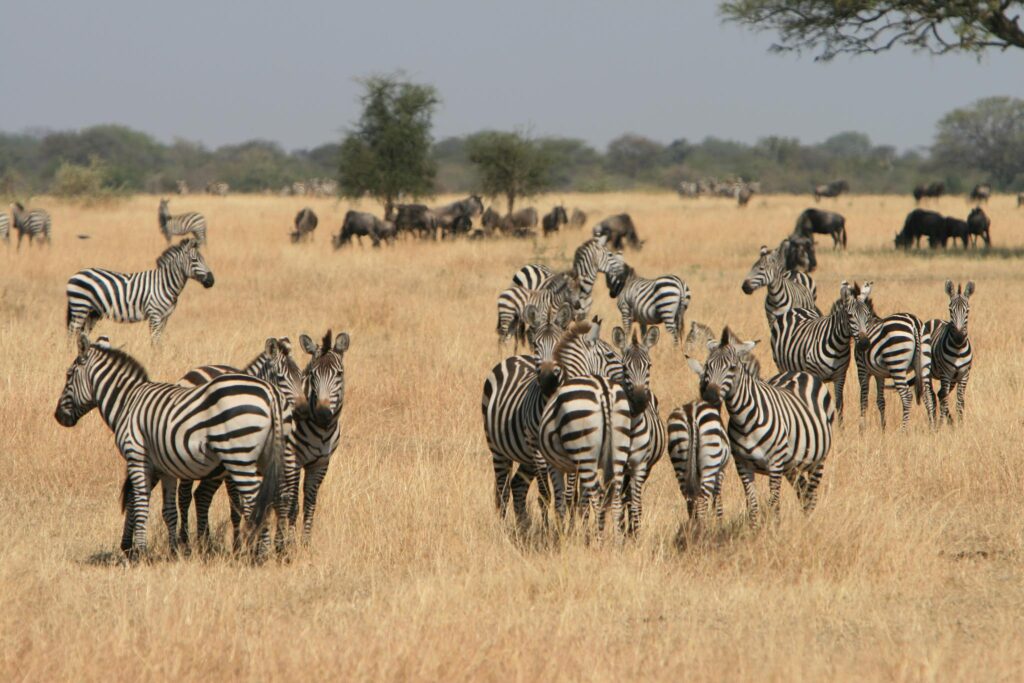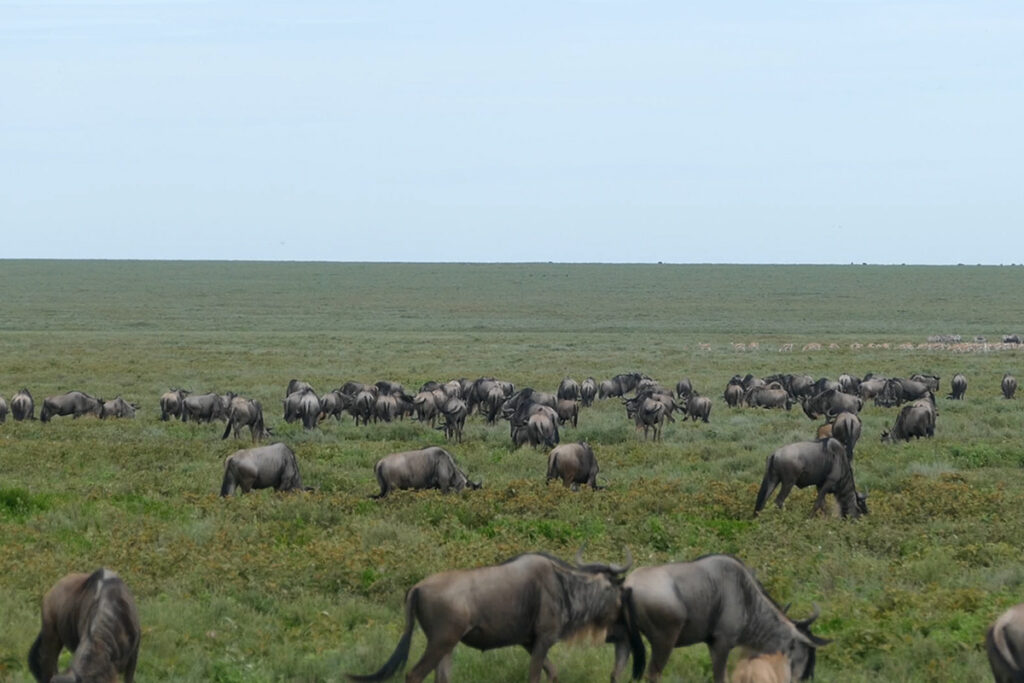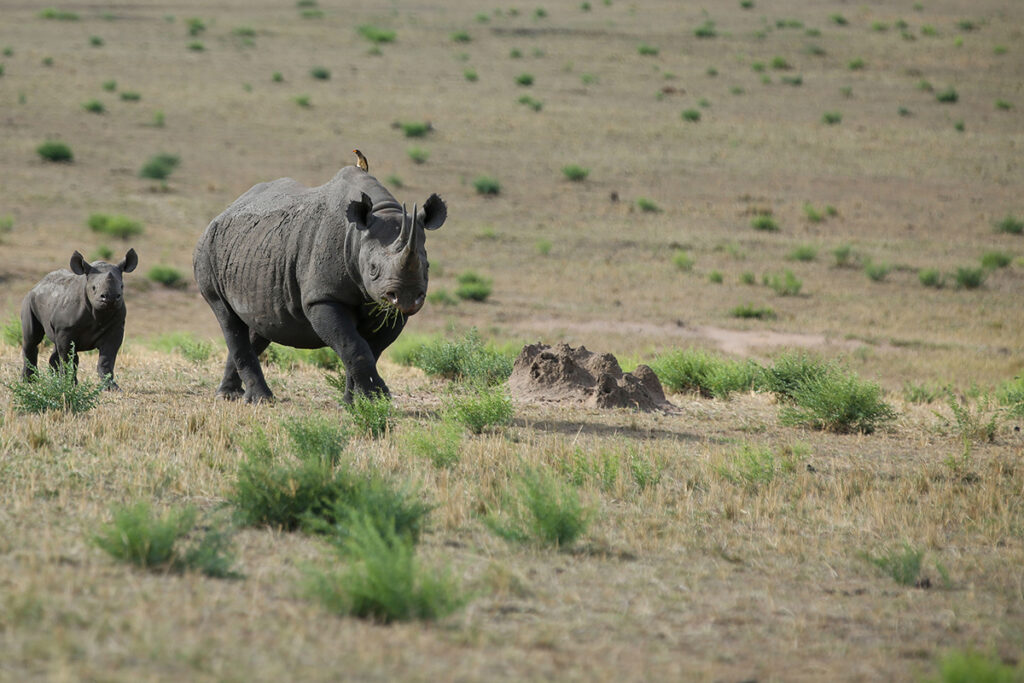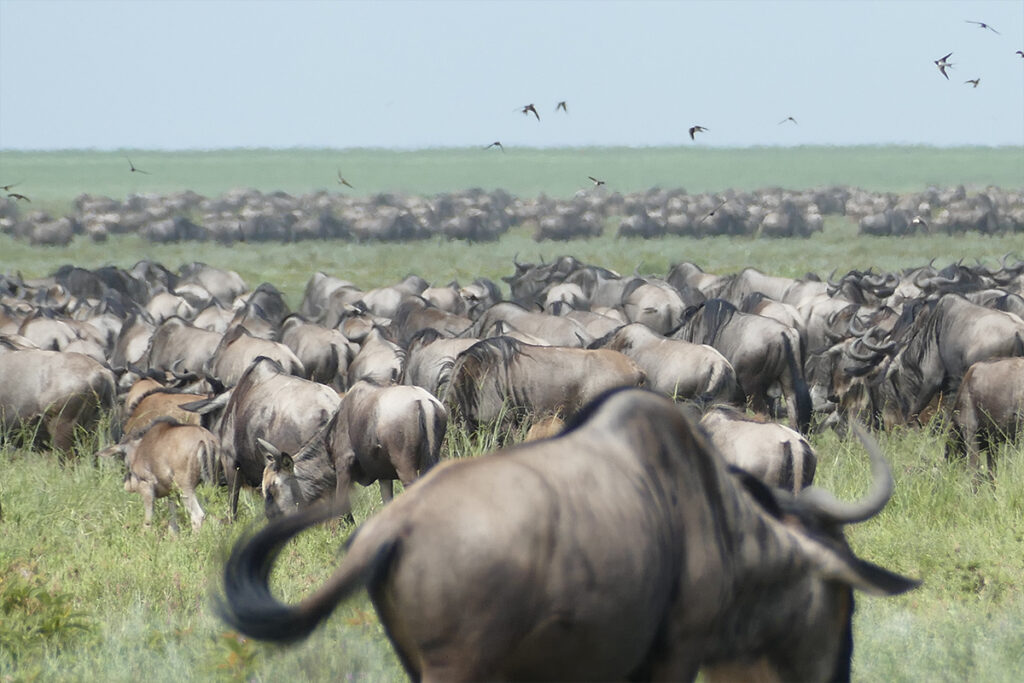With over 30% of its land dedicated to conservation areas, Tanzania holds the richest canvas for wildlife adventures globally. Envision the vast Serengeti, where the Great Migration – the annual movement of millions of wildebeests and zebras – takes center stage. This epic journey not only captivates adventurers but also emphasizes the crucial role of sustainable tourism in preserving these majestic landscapes.
Since the establishment of Serengeti National Park in 1951, Tanzania has expanded its commitment to safeguarding its unique biodiversity. Quick statistics reveal that the country boasts more lions than any other African nation, reflecting successful conservation efforts. For visitors seeking an enriching journey, expertly guided safaris offer insights into both the delicate ecosystems and vibrant Maasai culture that shape this extraordinary destination.

Tanzania Safari: The Ultimate Guide to an Unforgettable Adventure
In Tanzania, the wild speaks a unique language of adventure. Home to the Big Five, this safari destination offers encounters with lions, elephants, rhinos, buffalos, and leopards. The Serengeti hosts the world-famous Great Migration, where millions of wildebeests and zebras follow the rains. Visitors can witness this spectacle firsthand and feel the earth shake beneath thundering hooves. For those seeking something quieter yet equally breathtaking, there’s the Ngorongoro Crater with its rich biodiversity.
Tanzania also showcases its cultural richness through the vibrant Maasai tribe. Known for their distinctive attire and customs, the Maasai welcome guests with traditional dances and stories of their heritage. Their villages, filled with bright beads and intricate crafts, offer insights into their way of life. Safaris can blend thrilling wildlife sightings with visits to these cultural hubs. This combination creates a more holistic adventure for travelers.
Conservation is a key focus in Tanzania, ensuring that wildlife and local communities benefit from tourism. Many parks and reserves implement eco-friendly measures to protect their landscapes. Travelers can choose to stay in ecolodges, supporting sustainable practices. This commitment helps preserve the beauty of Tanzania for future generations. Efforts like these emphasize the importance of responsible travel in safeguarding natural resources.
Planning a safari in Tanzania involves choosing the right season and parks to explore. The dry season, from June to October, is ideal for spotting wildlife. However, some travelers prefer the green season for its lush landscapes and fewer crowds. Packing properly with essentials like sunscreen, hats, and binoculars is crucial. With a bit of preparation, a Tanzanian safari promises an exciting and unforgettable adventure.
The Rich Wildlife of Tanzania
Tanzania is home to an incredible diversity of wildlife, making it a must-visit for nature lovers. Among the most iconic animals are the Big Five: lions, elephants, buffaloes, leopards, and rhinos. These majestic creatures roam freely across vast savannas and national parks. Each year, the Serengeti witnesses the Great Migration, a breathtaking spectacle involving millions of wildebeests and zebras. This natural wonder captivates travelers from all over the globe.
Apart from the Big Five, Tanzania shelters a wide array of other species. Giraffes gracefully graze the treetops in Tarangire National Park. Hippos lounge in the waters of the Selous Game Reserve. Birdwatchers can delight in spotting flamingos on the shores of Lake Natron. This diverse ecosystem supports countless plant and animal species, creating a vibrant mosaic of life.
National parks and protected areas play a crucial role in conserving Tanzania’s wildlife. Serengeti, Ngorongoro Crater, and Ruaha National Park are just a few of the protected havens. These spaces ensure that animals have safe environments to thrive. Visitors can explore these parks while supporting conservation efforts. Safaris provide educational insights into the importance of preserving these habitats.
Responsible tourism helps protect Tanzania’s natural treasures. Choosing eco-friendly accommodations and activities minimizes environmental impact. Visitors can contribute by following park guidelines and respecting wildlife. Engaging in sustainable practices ensures these wonders remain for future generations. By supporting local communities, travelers can make their journey beneficial for both people and wildlife.
Witnessing the Great Migration in Serengeti
The Great Migration in the Serengeti is one of nature’s most awe-inspiring events. This spectacle involves over a million wildebeests, zebras, and gazelles journeying in search of greener pastures. These animals move in a massive loop across the Serengeti and into the Maasai Mara in Kenya. Timing your visit is crucial, as the migration can be witnessed at different times depending on the location in the park. The thunder of hooves and the dust clouds created are truly unforgettable sights.
January to March offers breathtaking views as the herds gather in the southern Serengeti. The calving season happens here, where thousands of baby wildebeests are born. This attracts many predators like lions and cheetahs, making it an exciting time to visit. Photography enthusiasts love capturing these dramatic moments. The green landscape adds an enchanting backdrop to the scene.
As the dry season approaches, the migration moves north towards the Grumeti River. This happens between June and July when the animals must cross the river. The crossing involves risks, as crocodiles lie in wait for their chance. Witnessing these tense moments from a safe distance provides a thrilling experience. Many tourists gather to see how nature balances survival and danger.
Witnessing the Great Migration requires careful planning. Guides ensure safety while maximizing the possibility of spotting wildlife. Staying at lodges situated along migration routes enhances the safari experience. Options vary from luxury camps to more rustic accommodations. Choosing the right time and place makes this adventure truly unforgettable.
Unfolding the jeweled wonders of Ngorongoro Crater
Nestled in northern Tanzania, Ngorongoro Crater is a breathtaking wonder. Formed millions of years ago, this collapsed volcano is now a hub of wildlife. It forms a natural enclosure where thousands of animals coexist. The crater’s floor spans over 100 square miles, housing a rich tapestry of ecosystems. Visitors can marvel at its sweeping vistas and diverse wildlife in a single day.
The crater boasts a variety of habitats, including grasslands, swamps, and lakes. Lake Magadi, with its alkaline waters, attracts flocks of flamingos. These pink birds add vibrant color to the landscape. Nearby, hippos wallow in mud pools surrounded by lush vegetation. The mix of environments supports an array of species found nowhere else.
Recognizing its unique beauty and ecological importance, Ngorongoro is a UNESCO World Heritage Site. Conservation efforts aim to protect its delicate balance. Rangers and researchers work tirelessly to safeguard its treasures. By visiting, travelers support these initiatives and help preserve the crater’s wonders. Educational programs offer insights into ongoing conservation activities.
In addition to wildlife, the crater is steeped in history and culture. Archaeological sites within the Ngorongoro Conservation Area tell stories of early human inhabitants. The Maasai people, known for their rich traditions, reside nearby. Visitors often have the opportunity to learn about their customs and way of life. This blend of nature and heritage makes the crater a destination like no other.
Safarigoers should plan their visit with care. Guided tours provide expert knowledge and safe travel within the crater. Packing essentials like binoculars, a camera, and comfortable clothing enhances the experience. Morning and late afternoon offer the best wildlife viewing opportunities. With thoughtful preparation, witnessing the wonders of Ngorongoro is truly rewarding.
Exploring the Maasai Culture: A taste of Authenticity
The Maasai people, known for their vibrant customs and unique attire, are a crucial part of Tanzania’s cultural tapestry. Their colorful shukas, or traditional robes, are a testament to their rich heritage. These garments stand out feature amidst the earthy tones of the landscape. The Maasai lifestyle revolves around cattle herding, which has been central to their economy and social structure for generations. This connection to livestock represents strength and prosperity for the Maasai community.
Dance and music are integral to Maasai culture, often performed during ceremonies and celebrations. Their iconic jumping dance is not only impressive but also a test of strength and endurance. This energetic display captivates those fortunate enough to witness it. Through these rituals, Maasai express joy, unity, and cultural pride. Visitors to Tanzania can often participate or observe these dances, gaining a deeper understanding of the Maasai way of life.
The Maasai are also master craftsmen, known for their intricate beadwork. Vibrant necklaces, bracelets, and earrings are crafted using colorful beads. Each piece tells a story, with patterns and colors holding specific meanings. Tourists often find these handmade items as unique souvenirs, reflecting Maasai traditions. Supporting local artisans by purchasing their crafts helps sustain their livelihood and preserve their artistic heritage.
Visiting a Maasai village offers an authentic glimpse into this fascinating culture. Guided tours allow guests to learn about Maasai traditions, such as how they build their homes or prepare traditional meals. The experience includes an invitation to experience their daily routines. Engaging with the Maasai offers an enriching cultural exchange, fostering appreciation and respect. Travelers leave the villages not only with memories but also with a newfound understanding of the Maasai world.
Incorporating Maasai culture into a Tanzanian safari enhances the adventure. It adds a rich cultural layer to the wildlife and landscape. By respecting the Maasai traditions and supporting community-based tourism, visitors contribute to the sustainability of these ancient practices. This collaboration ensures that both the culture and natural environment can flourish together. A journey through Maasai lands captures the spirit of Tanzania, offering insights into a timeless way of life.
Sustainable Tourism in Tanzania: Impact and Opportunities
Sustainable tourism in Tanzania aims to protect the environment while boosting local economies. By choosing eco-friendly accommodations and guided tours, travelers support conservation efforts. This approach ensures that tourism benefits both the land and its people. National parks and reserves like Serengeti and Ngorongoro Crater are at the forefront of such initiatives. These areas adopt practices that minimize human impact on fragile ecosystems.
One major aspect of sustainable tourism is community involvement. Local communities play a vital role in managing and conserving their natural surroundings. Programs focus on training residents to work in tourism-related jobs. This provides income while preserving cultural heritage. Tourists enjoy authentic experiences guided by locals who share firsthand knowledge.
The benefits of sustainable tourism extend beyond conservation. By promoting responsible travel, Tanzania gains a stronger position in the global tourism market. This attracts environmentally conscious visitors who seek meaningful journeys. Revenue from tourism helps finance infrastructure and educational projects. This dual emphasis on ecology and economy creates lasting positive change.
Challenges do exist in reaching full sustainability. Balancing tourist numbers with environmental preservation requires constant attention. Overcrowding and resource depletion pose potential threats. Ongoing awareness and cooperation among stakeholders are essential. Government policies and regulations also support this delicate equilibrium.
Visitors can contribute to sustainable tourism through mindful choices. Supporting local businesses, respecting cultural norms, and conserving water are simple actions. Eco-friendly travel reduces the carbon footprint, ensuring a healthier environment for future generations. Through awareness and active participation, tourists become allies in Tanzania’s journey toward sustainability. Together, these efforts pave the way for a thriving tourism industry that respects both people and nature.
Planning Your Tanzania Safari: Tips and Tricks for the Best Experience
Planning a safari in Tanzania involves several key considerations to enhance your adventure. First, choose the right time of year, as seasons greatly impact wildlife viewing. The dry season, from June to October, is ideal for spotting animals around water sources. However, the green season offers fewer crowds and lush landscapes. Each period provides unique opportunities for different experiences.
Selecting the right parks and reserves is crucial to maximizing your safari experience. Serengeti National Park is perfect for witnessing the Great Migration. Ngorongoro Crater offers a compact yet diverse environment filled with wildlife. Tarangire National Park is known for its massive elephant herds. Researching these options will help tailor your itinerary to match your interests. Combining various parks can provide a well-rounded safari.
Your packing list should include essential items for comfort and functionality. Pack light clothing in neutral colors to blend into the environment. Bring sunscreen, insect repellent, and a hat to protect yourself from the sun. Comfortable walking shoes are vital for exploring different terrains.
- Light clothing
- Sunscreen
- Insect repellent
- Hat
- Comfortable shoes
These essentials ensure you are prepared for any conditions you may encounter.
Choosing reputable safari operators can significantly enhance your trip’s quality and safety. Look for operators with knowledgeable guides and positive reviews.Safari Bookings provides valuable insights into various operators you’ll find suitable providers who prioritize eco-friendly practices., making it easy to compare options.By ensuring reliability, you’ll have more enjoyable and safer experiences.
A successful Tanzania safari blends careful planning with flexible expectations.Communicating preferences with guides allows tailored experiences ranging from cultural visits to night drives if desired.Patience makes wildlife encounters rewarding as nature follows unpredictable patterns.Capture memories mindfully respecting both animals&people creating lasting impressions on this journey.. With thoughtful preparation,your Tanzanian adventure plans guiding unforgettable memories amidst Africa’s beauty-rich wilderness+cultures!
Key Takeaways
- Tanzania safari offers unique wildlife experiences, like the Great Migration.
- The Maasai culture adds depth and understanding to your visit.
- Ngorongoro Crater showcases breathtaking landscapes and diverse animals.
- Eco-friendly tourism supports local communities and preserves nature.
- Planning ensures a rewarding adventure filled with unforgettable memories.



